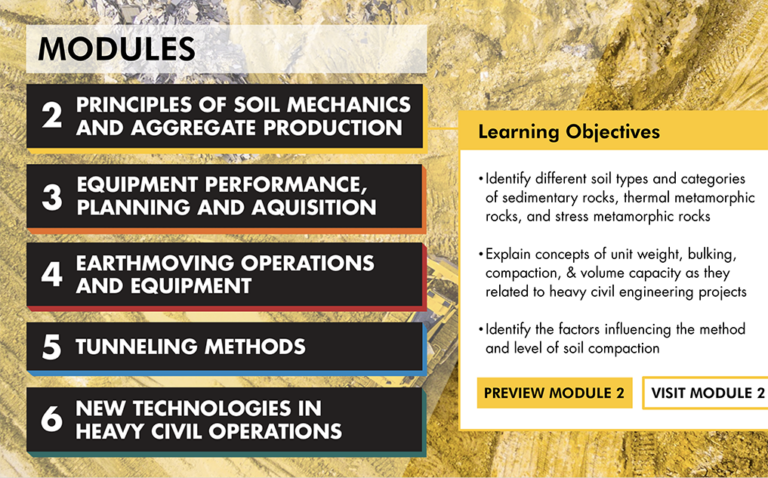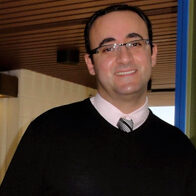Earthmoving Operations and Equipment
Module Overview
Earthmoving is one of the main activities associated with heavy civil operations and is primarily equipment-driven. In this module, you will be introduced to a wide range of earthmoving equipment, from bulldozers to excavators and dump trucks. The application of each equipment as well is its power considerations and production levels are all covered in this module.
Learning Outcomes
- Identify different types of equipment used on earthmoving operations, including excavation, transportation, and compaction
- Differentiate the use cases for each type of earthmoving operation
- Explain equipment capacities and constraints using equipment charts
- Choose compaction method and equipment based on site conditions
- Calculate production levels for major earthmoving equipment in different site conditions
Explore Module
Please note that this preview is intended for exploration purposes only. If you'd like to use this module in one of your courses, to ensure playback and tracking, you must upload the SCORM package (downloadable below) to your institution's Learning Management System (ex. Blackboard, D2L, Moodle, etc).
Related Project Resources
| Type | Title | License |
|---|---|---|
| Image | Excavator Arm Diagram (PNG, 6.53 MB) | CC BY |
| Image | Excavator Digging Envelope (PNG, 337.12 KB) | CC BY |
| Image | Rolling Resistance Surface Types Chart (PNG, 357.48 KB) | CC BY |
| Image | Struck vs Heaped Capacity (PNG, 261.34 KB) | CC BY |
| Image | Struck vs Heaped Bucket Capacity (PNG, 388.95 KB) | CC BY |
| Image | Traction Coefficients Chart (PNG, 229.56 KB) | CC BY |
| Scorm Package | Earthmoving Operations and Equipment (SCORM package) (123 MB) | This SCORM package can be downloaded, and uploaded into your institution's Learning Management System. | CC BY |
| Storyline File | Equipment Performance, Planning and Acquisition (Storyline file) (177 MB) | This Storyline File can be downloaded and modified to your specific learning objectives (within the bounds of the creative commons licensing selected for this file. This is encouraged, but any technical issues are not supported by the University of Toronto. | CC BY |

Module Details
N/A




